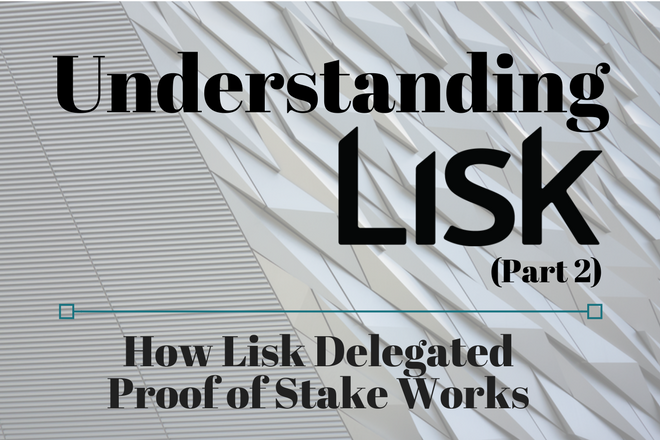In the crypto world, there are many ways to secure a network. One key differentiation of the Lisk platform is that it uses a Delegated Proof of Stake (DPoS) consensus algorithm. To fully understand Lisk, one must get a handle on the how, what, and why of DPoS.
In this second article of our series, we’ll dig deeper and continue our breakdown of Kylefromohio’s infographic.
Let’s start at the beginning, what exactly is DPoS?
According to biteshares.org:
“Delegated Proof of Stake (DPoS) is the fastest, most efficient, most decentralized, and most flexible consensus model available. DPoS leverages the power of stakeholder approval voting to resolve consensus issues in a fair and democratic way”.
If this definition leaves you with question marks, don’t worry. Below is a bit of context, the infographic, and a few more expanded thoughts. For advanced readers, Vitalik Buterin wrote a more technical explanation which may be of interest to you.
Why DPoS?
You’re probably familiar with terms like proof of work or proof of stake. Their existence begs the question: if there already are good consensus algorithms, why is there a need for DPoS?
The DPoS method was developed in 2014 by Bitshares’ lead developer Daniel Larimer, as a response to problems that Larimer foresaw (the whitepaper can be found here). Namely, that Bitcoin mining was too energy-intensive and that eventually centralization of mining would occur, leading to an imbalance of network control (this is an interesting topic in its own right).
There was also the issue of speed which, due to the PoW method of BTC mining, can be very slow. Larimer designed a new, fast system that addressed these faults.
But how exactly does DPoS function? An analogy commonly used to describe it is that of a workplace.
In the world of DPoS, all the members of the workplace have a say in who controls that office. If you have an asshole manager or an incompetent CEO, vote them out. In short, DPoS offers a layer of technological democracy to offset the negative effects of centralization.
How Lisk Delegated Proof of Stake Works
Here are the elements that comprise and support this system for the Lisk platform.
This infographic may appear complicated at a glance but it’s actually simple. The six colored circles around the perimeter all represent people, entities or dynamics with a simple aim: secure the network and fuel innovation.
Delegates perform the function of validating transactions. They maintain the blockchain (forging) and take transaction fees as profit. Estimates indicate that forging can get a user up to 12k Lisk per month.
Ambassadors also play an important role. They take care of community members on a more local level and give technical support if needed. They also promote the Lisk ecosystem with its decentralized applications and custom blockchains. Lisk recently expanded its ambassador program.
In the spirit of a truly open source project, anyone can draft a proposal for Lisk and share it with the community. Campaigns are subsequent actions taken based proposals whereby community members are paid for their contributions.
Projects are generally higher level undertakings, where an elected delegate proposes ideas and developers take the idea to build useful apps, scripts or tools for the community. Ambassadors and delegates are voted in and many reached their positions by contributing to the community through proposals, campaigns, and projects.
As the network grows, more people join and it becomes harder and harder to be a delegate. This competition drives people to provide even more value to the Lisk community.
Built into all of this is reward sharing based on the token LSK. Many delegates have preset allocations of their rewards distributed to drive growth in the community as a whole.
Additionally, all members of the Lisk community have an incentive to vote (weighted by total currency held) for good delegates, improve the system and promote it. They also have an incentive to give bad delegates the boot. This incentive is an increasingly valuable LSK asset.
Summary
Every system has its pros and cons. The democratically-intended symbiosis of Lisk DPoS has shown efficiency that allows for lower fees, fast confirmations and the potential for increased profitability.
Conversely, by concentrating the role of validation in a smaller number of hands, it may be less decentralized and less resilient. It’s also subject to voter apathy; without a large number of engaged users, the system will not function as intended.
As with all things Lisk, huge potential can be seen on the horizon but whether or not it will be realized is yet to be seen.
In Part 3 of our series, we‘ll dive into Lisk Coin Supply.


